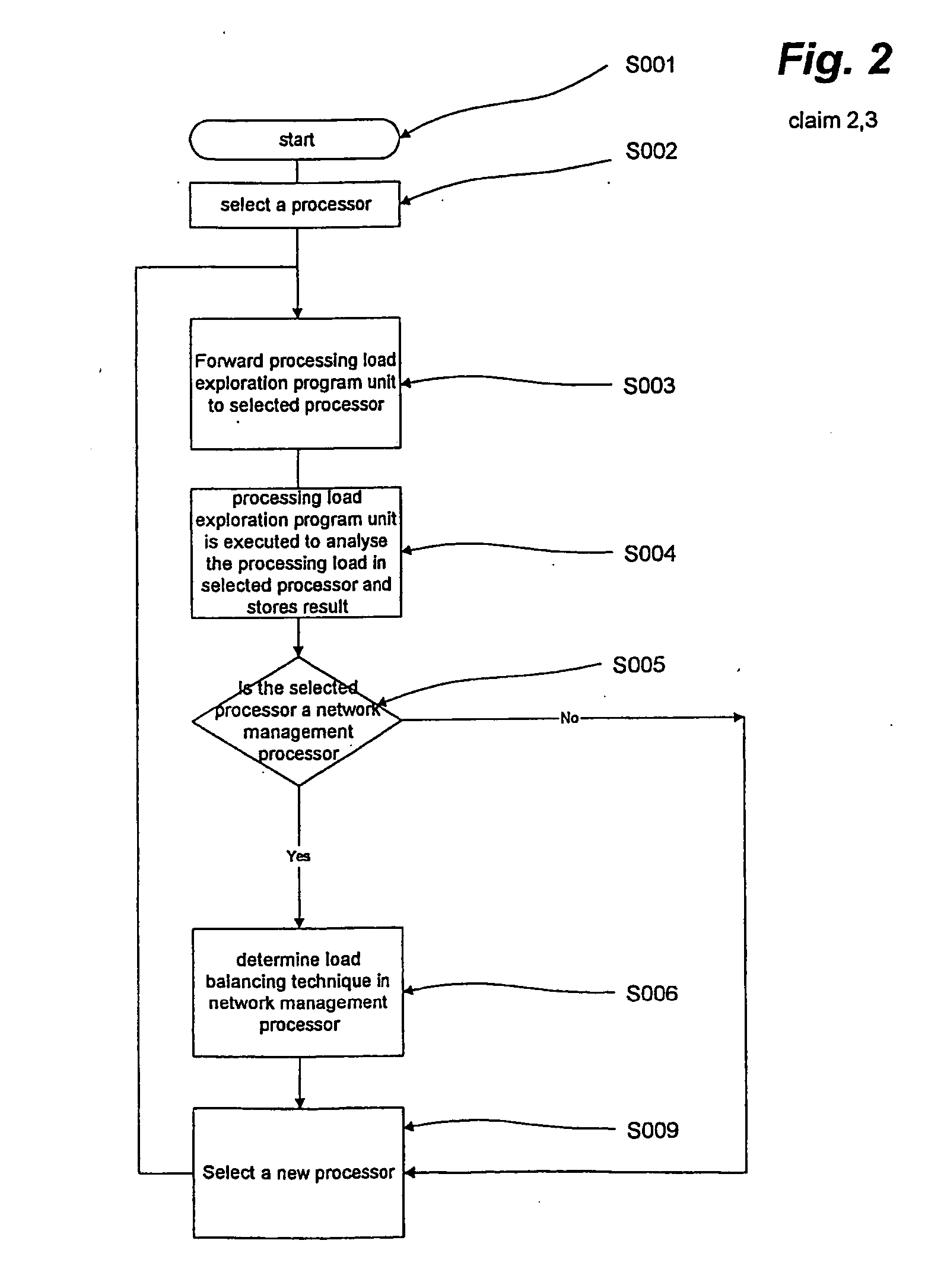Load balancing system using mobile agents
a load balancing and mobile agent technology, applied in the field of load balancing systems, can solve the problems of further deterioration of the system as a whole, poor performance under unusual or unpredictable network conditions, and inability to provide a predefined mechanism capable of dealing with all situations, so as to achieve the effect of improving the overall efficiency of the network and ensuring the level of processing effor
- Summary
- Abstract
- Description
- Claims
- Application Information
AI Technical Summary
Benefits of technology
Problems solved by technology
Method used
Image
Examples
first embodiment
[0069]FIG. 1 shows a load balancing method according to the present invention. This method relates to the management of the respective processing loads of a plurality of processors, which are connected together in a network. The method comprises the steps of selecting one of the processors in the network, at step S002, and forwarding a processing load information collection message 21 to the selected processor.
[0070] The selected processor receives the processing load information collection message 21, and after the level of demand on resources of the selected processor is ascertained, this information is added to the processing load information collection message. It is further determined whether the selected to which the processing load information collection message has been forwarded is a processor having network management functions. If it is found that the selected processor is a network management processor, at step S005, the method proceeds to step S006, at which a load bala...
second embodiment
[0071]FIG. 2 shows a load balancing method according to the invention. The method of FIG. 2 is similar to that of FIG. 1, in that it comprises the same steps S001 of starting the method, S002 of selecting a processor, S005 of determining whether the selected processor is a network processor is a network management processor, S006 of determining a load balancing technique, and S009 of selecting a new processor. However according to this method, the step S003 involves the forwarding of a processing load exploration program to the processor selected at step S002, and step S004 involves executing the processing load exploration programming unit, so as analyse the processing load in the selected processor, and storing the result in a part of the processing load exploration program unit. Thus, while the method of FIG. 1 merely discloses the triggering of various events by the arrival of a particular message, in the method of FIG. 2, it is the message itself, in the form of a processing lo...
third embodiment
[0074]FIG. 3 shows a load balancing method according to the invention. FIG. 3 comprises all of the same steps as discussed as with reference to FIG. 2. In the method of FIG. 3 however, there is further provided a step S008, between the step S006 of determining the load balancing technique, and step S009 of selecting a new processor. Step S008 involves the transmission of load balancing method implementation messages to one or more processors in a network as required. Thus, when the processing load exploration program unit is present in a network management processor, once it is determined what load balancing technique is appropriate to the load balancing condition of the network as a whole for example on the basis of load threshold criteria, or the variation of the loading of particular processors from a mean loading, the load exploration program unit further acts to activate the load balancing methods located in processors in the system so as to realise the load balancing technique...
PUM
 Login to View More
Login to View More Abstract
Description
Claims
Application Information
 Login to View More
Login to View More - R&D
- Intellectual Property
- Life Sciences
- Materials
- Tech Scout
- Unparalleled Data Quality
- Higher Quality Content
- 60% Fewer Hallucinations
Browse by: Latest US Patents, China's latest patents, Technical Efficacy Thesaurus, Application Domain, Technology Topic, Popular Technical Reports.
© 2025 PatSnap. All rights reserved.Legal|Privacy policy|Modern Slavery Act Transparency Statement|Sitemap|About US| Contact US: help@patsnap.com



